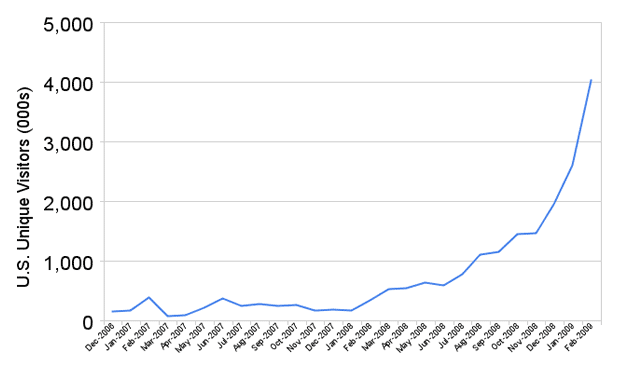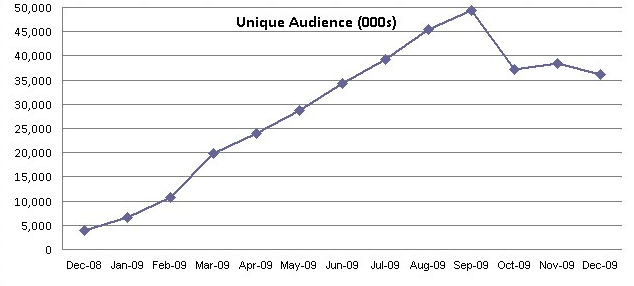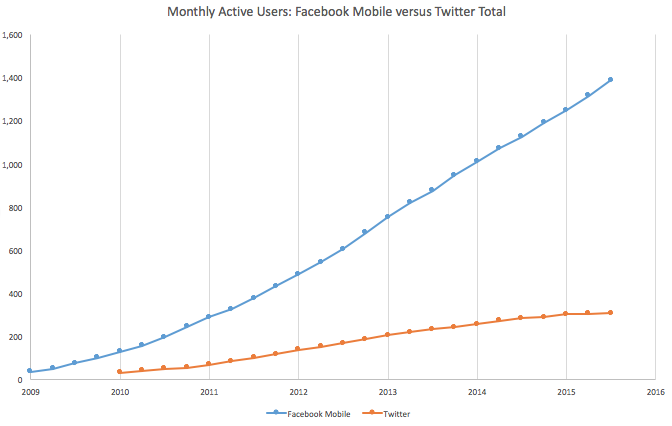How Facebook Squashed Twitter
How Facebook Squashed Twitter
The idea of a “smartphone” that could connect to the Internet and run applications was around long before 2007; Apple, though, was the first to put the entire package together, including the device, user interface, and interaction paradigm, which is why the first iPhone is considered the start date of the mobile revolution.
Similarly, the idea of a feed of information developed over many years; blogs were based on the format, and RSS allowed users to compile multiple news sources into a single stream. However, the introduction of Twitter in March of 2006, along with the Facebook News Feed, in September 2006, were the two seminal products that brought all the essential components together: users, content, and a place to read. I would argue it’s a date that is just as significant.
Today, having a feed that users willingly return to day-after-day is the foundation of successful mobile advertising companies, especially Facebook. As I noted back in 2013 the feed allows for an advertising unit that is actually superior to anything found on the desktop: users have no choice but to at least visually engage with whatever is dominating the screen of the mobile device that is the center of their lives.
In fact, I would argue that the feed is so important that its development — or lack thereof — is the core reason why Facebook has soared over the last ten years, while Twitter has slumped after a beginning that suggested the exact opposite sort of outcome.
Twitter’s 2009 Slowdown
In their 2013 S-1 Twitter released user numbers that only went back to Q1 2010; the best estimate of growth between 2006 and 2010 is found by looking at 3rd-party services reports on traffic to Twitter.com. The numbers, at least for the first three years, are very impressive. This is from comScore: 1
However, later that year something surprising happened: Twitter’s growth dramatically decelerated. Here’s a chart of Nielsen data: 2 3
That summer produced the first set of stories that have since come to dominate the Twitter narrative: Twitter’s Phenomenal Growth Suddenly Stops , Has Twitter Peaked? , Is Twitter in Trouble , Twitter’s Growth: Has It Peaked? , Twitter’s Global Growth Flattens . In retrospect, the answer is yes: as noted, Twitter reported user numbers starting in 2010 that never came close to the hockey stick growth the company enjoyed from 2006 to 2009.
So what happened?
Facebook Versus Twitter
The counterpoint to Twitter’s declining growth numbers was, as noted, Facebook. While the company always had a big head start on the desktop, the story was quite a bit different in mobile. In the first quarter of 2009 Facebook only had 35 million active users on mobile, barely more than Twitter’s 30 million active user base (which was predominantly mobile) a year later. However, the trajectory from those starting points couldn’t be more different:
I suspect the dramatic difference in Facebook and Twitter’s growth was due to three factors:
- Facebook always had an inherent advantage over Twitter in that its network, at least in the beginning, was based on networks that already existed in the offline world, namely, people you already knew. That made the service immediately approachable and useful for basically everyone. Twitter, on the other hand, was more about following people you didn’t know based on your interests. This theoretically applied to everyone as well, but uncovering those interests and building an appropriate list of people to follow had to be done from scratch.
文章版权归原作者所有。



